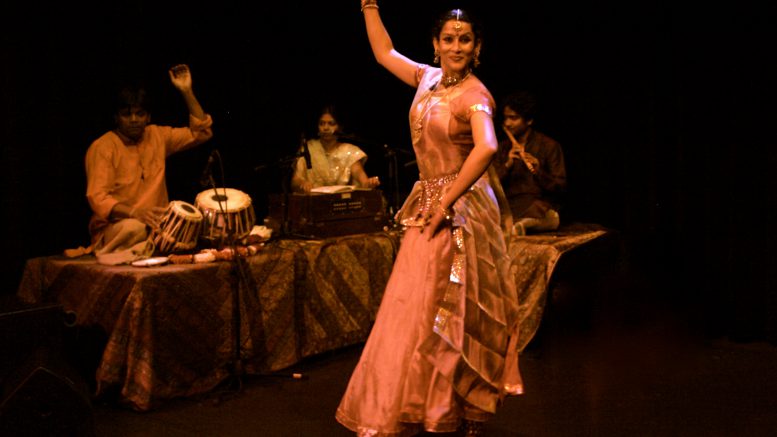Dance and music has now reached the fourth generation of the Ganganis. Kathak entered the family when Kundan Lal Gangani’s father married into the family of the well-known Kathak dancer Pandit Sundar Prasad. Hailing from Rajasthan’s Churu district, they are now leading exponents of the Jaipur gharana, with Kathak dancer Pandit Rajendra Gangani at the helm of affairs. They have been living in Delhi for five decades, and performed together, as a family, for the first time in the city last week. While 14-year old Nishit played the tabla, Harish’s performance exuded grace. “We are a huge family and almost everyone is a dancer or musician. At times, I tell the youngsters that they should think about alternative career options, but they don’t want to do anything else,” says Harish, who has performed in dance festivals all over the world.
At the Ganganis residence in Karol Bagh, one will always hear the sound of music. “It’s an every day affair,” says Bhawani, who is a professional Kathak dancer like his grandfather and uncles, “As kids, from the moment we woke up, we would rush to see our uncles and Guru Pandit Rajendra Gangani dance. We were charmed by their footwork and movement, that’s how our interest grew.” Bhawani started learning the dance at the age of eight.
For ‘Family Portrait – A Kathak Baithak’, three generations of the Ganganis came together on stage to present their personal history. They also played the tabla and the pakhawaj at Delhi’s OddBird Theatre and Foundation. While the jugalbandi between the three teams was exciting, it was even more interesting to know that those on percussion were also adept at kathak. Talking about reviving the baithak tradition, Harish says, “In the past, baithaks used to happen in temples, where everything was live, and dancers and musicians narrated stories of the gods. Later the culture shifted to families. Now, we see it vanishing.” Pandit Rajendra Gangani adds to that thought, “I’ve lived and performed in the city for many decades and I haven’t seen such a close-knit performance in the city. The audience will get a feel of the real art — without colourful costumes, elaborate lighting and a faraway stage.”
Bhawani, 27; Sanjeet, 21; Nayanika, 16; and Harish, 47, presented various tukdas, todas and thaats to give the audience a sense of the Jaipur gharana, which focuses more on the footwork and hand gestures that are quick and sharp.
Where male classical dancers are slowly vanishing from the scene, the Ganganis are predominantly a family of male Kathak dancers. “Since dance and music were our only profession, the men would go out and learn the art form, while women stayed at home,” says Harish.His daughter, Nayanika, is the first girl in the family to pursue dance and perform on stage. The 16-year-old, who wants to pursue a career in science alongwith dance, learnt recently that she has unknowingly created history in the family.

Be the first to comment on "Dance on the House: Rajasthan’s fourth generation of Kathak performers"